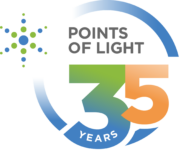ASSISTIVE TECHNOLOGY PROGRAM
The Assistive Technology Program at the University of Massachusetts Lowell was founded by Professor D. Clark more than 10 years ago, in order to help those in the community with disabilities. A unique aspect of this program is that undergraduate students develop equipment to improve the quality of life of disabled individuals. Each student or team of students works with a “client” to develop hardware and software that is tailored to their needs.
An example of the students’ work is the development of several voice-activated devices for Sam Afro, a quadriplegic living in Lowell, to permit him to operate his front door, computer, TV, air conditioner, heating and lights. In many cases, development of this kind of customized technology is extremely beneficial to others with similar handicaps.
The Assistive Technology Program already has helped more than 200 individuals during the last 10 years and the faculty, staff and students involved have established strong ties to many area hospitals and care-providers. More than 60 students have carried out assistive technology projects, in many cases continuing the relationship with their “clients” and the client’s institution long after graduation.
As engineering enrollments have increased over the last few years, an increasing number of students have taken on an assistive technology project for their capstone project in their senior year. Professor Clark has been instrumental in getting the National Science Foundation and a large number of individuals and companies locally, to support the cost of the equipment and components needed for these systems. While there are far more requests for help than there are students and funds for project support, the program continues to grow. Apart from the obvious benefits to the individuals who are helped, the students working with them acquire a very important awareness of the responsibilities and expectations of engineers in a caring society.
The program has recently permitted freshmen and sophomores to get involved in making a unit designed by upperclassmen, when several similar devices are needed. Also, the Assistive Technology Program and its laboratories provide a unique resource center in the region that raises the awareness of the community of what is available for the disabled population.
